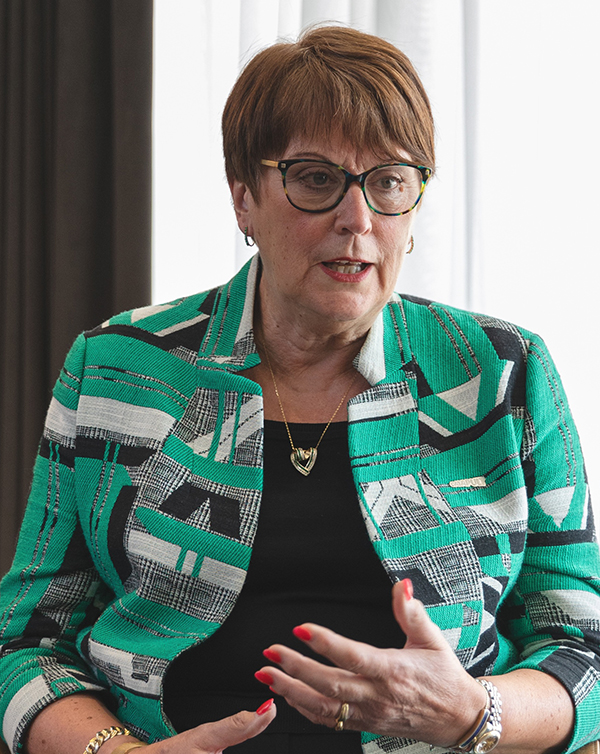HSE flags concerns on more than 50% of proposals, as Hackitt tells CIOB conference industry is still resisting change.
The new ‘planning gateway one’ has rejected more than half of all higher-risk building applications in the first six months of the system.
Dame Judith Hackitt, speaking at the CIOB’s first Safer Buildings UK conference, said that developers and construction firms were “still trying to game the system” and “not taking building safety seriously”.
The government introduced planning gateway one in August 2021 as part of reforms to the building safety regime following the Grenfell disaster. Higher-risk building planning applications must go through the gateway, which is run by the Health and Safety Executive (HSE). In future it is likely to be operated by the Building Safety Regulator, currently in shadow form.

“It is unfathomable to me why people have still not woken up to the need for a very different approach to building safety.”
Planning gateway one aims to ensure developers consider fire safety needs such as site layout, safe escape routes and safe access for firefighters at the planning stage.
It is one of three gateways introduced as part of a more stringent regulatory framework for design and construction of new high-rise residential buildings, care homes and hospitals which are more than 18m in height or at least seven storeys tall. Gateway two (before building work starts) and gateway three (when building work is completed) are still to come into effect.
Common fire safety design issues HSE has identified in applications to date include smoke vents and external wall openings close to neighbouring properties and restricted or non-existent access for fire appliances.
Hackitt, who chairs the Industry Safety Steering Group and the transition board overseeing the establishing of the new Building Safety Regulator, told the CIOB conference: “It is unfathomable to me why people have still not woken up to the need for a very different approach to building safety.
“At Grenfell, not only were lives lost, but trust was lost too. The regulatory system had failed, but this industry had showed a lack of regard for building and resident safety. The good news is that the regulatory system is going to change. But I’m going to tell you all, yet again, to stop waiting. The time to change your behaviour and rebuild trust in this industry is now – not when the regulator makes you do it.”
Image: Julie Kim Photography
Comments
Comments are closed.











If over 50% of all applications are being rejected at Gateway 1 (which, in many cases, will only have a conceptual level of detail included for planning purposes), then could it be argued that the regulations and guidance informing the aforementioned are not fit for purpose (to even define the strategic/conceptual requirements of a building). To borrow a phrase, it seems unfathomable to me that over half of the industry would either deliberately or mistakenly made decisions that would lead to compromised fire safety standards for the occupants of buildings and the FRS who attend them.
Or, rather than accepting any kind of responsibility for the issues, we could continue to point the finger at the ‘industry’ and it’s collective ‘hive-mind’. The same collective that either actively conspires to threaten the general public with unsafe buildings, or at worst permits it through inaction.
In the Building (Amendment) Regulations 2022 (effective 1st December), Regulation 7 has an exemption within an exemption clause. Talk about introducing confusion! We’re now doing double negatives in legislation.